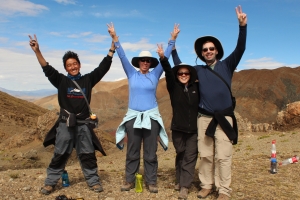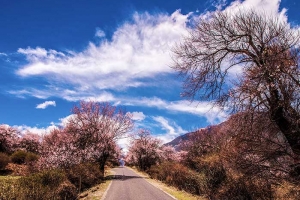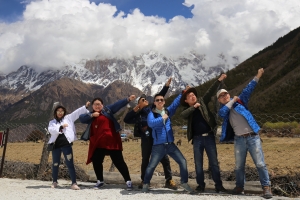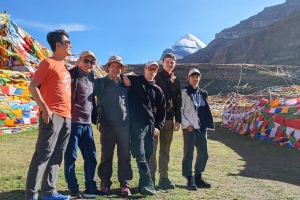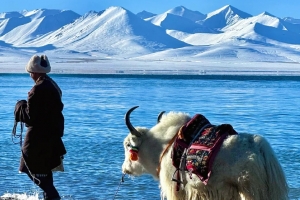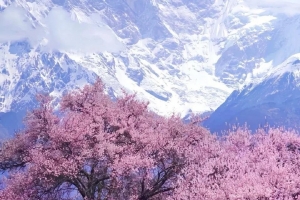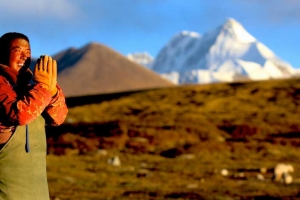Tibet’s customs and traditions are deeply shaped by Tibetan Buddhism and centuries of high-altitude living. From its warm greetings to solemn rituals, every aspect of daily life reflects reverence for nature, community, and the spiritual realm. Whether you’re chatting with a local elder, sharing butter tea, or quietly observing monks in prayer, understanding these practices will enrich your journey on the “Roof of the World.”
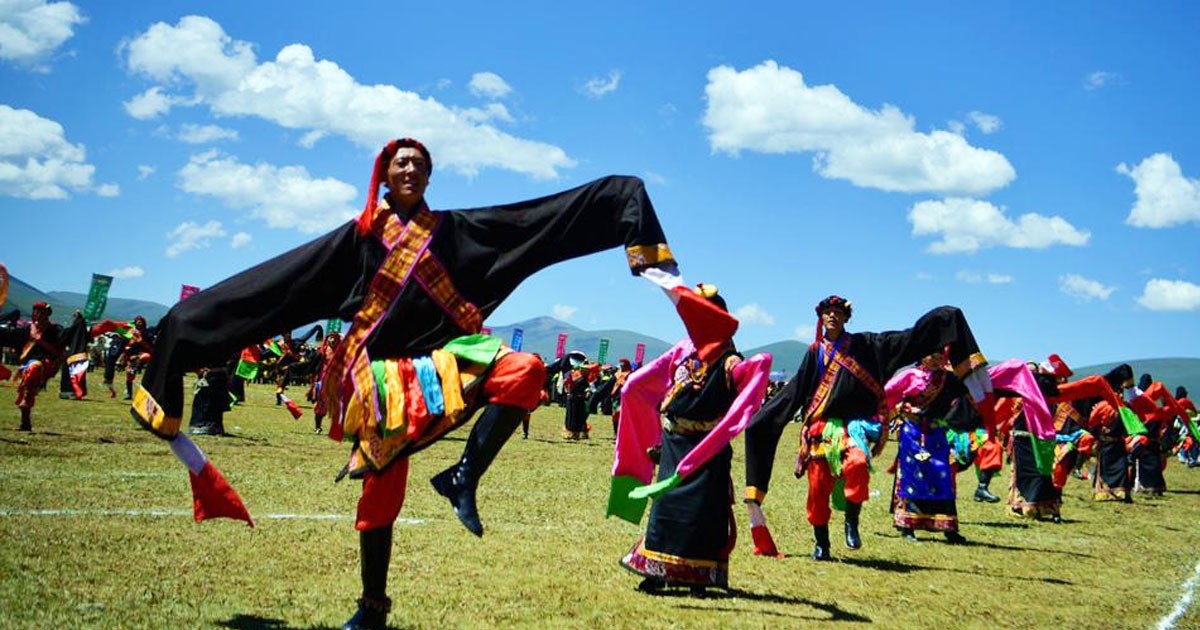
Tibetan Form of Greetings
The most common Tibetan greeting is “Tashi Delek,” literally meaning “auspicious and good.” When you say this, you’re offering heartfelt wishes for health, happiness, and good fortune. Upon hearing it, the proper response is simply to repeat “Tashi Delek,” sometimes adding a friendly tilt of the head or a slight bow to convey sincerity.
Hospitality in Tibet often begins with the presentation of a white silk or cotton scarf known as a khatag (also spelled khata). Guests, elders, and even deities are honored with this ritual offering. Draping a khatag around someone’s neck is a gesture of deep respect, gratitude, and welcome.
Etiquettes to Visit Religious Sites
When you enter a Buddhist monastery or temple, it’s polite to remove your hat. Covering your shoulders and legs is appreciated—avoid shorts, tank tops, or revealing clothing. Though foreigners are not required to remove their shoes, doing so shows extra reverence.
Inside shrines, maintain a hushed tone and walk in a clockwise direction around statues and stupas (the reverse applies in Bon-tradition sites). Refrain from touching sacred objects or opening doors to private chambers, as monks may be in deep retreat or prayer. Photography is often prohibited inside sanctuaries to preserve the sacred atmosphere.
Table Manners
When invited for a meal in a Tibetan home, sit cross-legged if space allows and wait for the host to begin serving. Take small, respectful portions rather than heaping your plate. Eating quietly and finishing what’s on your plate honors the cook and avoids waste.
The Four-Cup Wine Ritual
Tibetan hospitality often includes a ceremonial offering of wine (chang). The guest dips a finger into the cup and flicks a drop toward the sky and earth, symbolizing respect for heaven, earth, and ancestors. After a gentle sip, the host refills. By the fourth refill, the guest empties the cup completely to show proper courtesy and closeness.
Dressing in Tibet
Tibetans traditionally wear the chuba, a long robe tied at the waist, which protects against the cold plateau winds. Visitors should dress modestly—long sleeves, long skirts or trousers, and scarves are advisable. Avoid revealing or tight clothing, which can be seen as disrespectful or ignorant of local values.
Photographing Locals
Always ask permission before photographing individuals, especially in rural villages or near religious sites. A polite “Tashi Delek” and a friendly gesture go a long way toward mutual trust and respect.
Guoxie (Circle Dance)
During festivals and social gatherings, Tibetans perform the Guoxie, a circle dance where participants link hands and step in unison, celebrating communal spirit. In some areas, this dance continues from sunset until dawn.
Duixie (Tap Dance)
The Duixie is characterized by rhythmic foot-tapping in time with stringed instruments like the dranyen (Tibetan lute). A lead dancer often guides the group through intricate steps.
Zhuoxie (Drum Dance)
Especially popular in Lhasa and surrounding regions, the Zhuoxie features powerful drumbeats and dynamic movements that evoke both celebration and ritual energy.
Butter Tea (Po Cha)
Butter tea—a nourishing blend of strong tea, yak butter, salt, and sometimes milk—is central to daily life. Guests accept the cup with both hands, offering a slight bow. Hosts refill the cup multiple times; it’s polite to leave a small amount in the final serving to signal contentment.
Sweet Milk Tea
A lighter, sweeter variant of butter tea, this brew is often flavored with local herbs and sugar. The same etiquette of two-handed offering and respectful acceptance applies.
Sky Burial
Also known as “celestial burial,” sky burial reflects the Tibetan belief in impermanence and the transmigration of the soul. Vultures, honored as “sky dancers,” consume the body, returning the flesh to nature and the spirit to the heavens.
Only close family and clergy participate directly. Outsiders are discouraged from attending out of respect for privacy and the sacred nature of the rite.
Integrating Customs into Your Visit
Understanding and observing these customs greatly enhances cross-cultural respect. Simple acts—repeating “Tashi Delek,” donning a khatag, walking clockwise in a monastery, or sipping butter tea with both hands—signal honor and openness. Embrace the rhythms of Tibetan hospitality and spirituality to forge genuine connections with the people and land of the high plateau.

